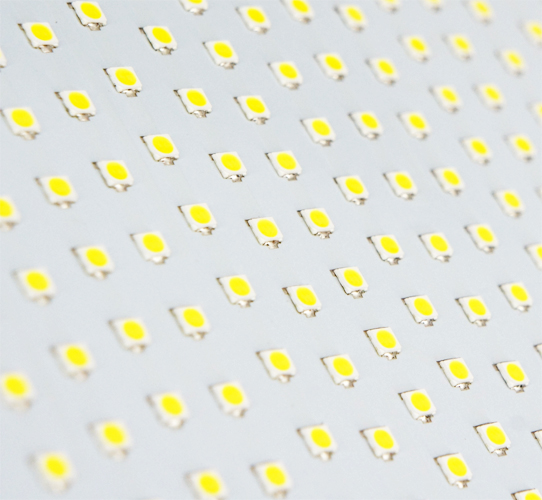The Power of LED Lumens
Date: 22.06.2016
Author: admin
One of the most common and most prevalent questions asked of LED lights, is how many LED lumens replace Metal Halide or High Pressure Sodium lumens
Our NIMMO LED Flood Lights range in 10W-1000W offers a direct replacement for the energy consuming 50W-2000W Metal Halide flood lamps. How can so few LED lumens replace so many Metal Halide lumens?
1. Focused Directional Lumens
LED light is directional. Conventional light sources are omnidirectional and require reflectors to gather the light and focus it to where it is needed. Metal Halide bulbs produce light in every direction and all that light must be gathered and focused where it is needed. To do this, the light must hit the reflector in the fixture and it bounce, hopefully down. Any light reflection that bounces more than once is essentially lost. It has been proven that you can lose up to 30% of the effective lumens in this reflective bounce process.
2. Quality of Lumens
The quality of lumens is related to the Colour Rendering Index (CRI). A high CRI (as close to 100 as possible) means you require fewer lumens due to their higher quality.
In areas such as retail stores or showrooms, a higher CRI would be required as opposed to a carpark where a lower CRI would be adequate.
3. Photopic and Scotopic Lumens
Photopic lumens are lumens that are detected by a device like a camera and are registered by light meters.
Scotopic lumens are lumens detected by the human eye. Eyes detect lights via rods and cones.
When a light meter reads light, it picks up all the spectrums it’s capable of detecting. This includes spectrums that we as humans can’t detect. Engineers then developed a scotopic light meter, which is calibrated to pick up only the lumens that the human eye sees. They discovered that certain light sources are more readily detectable by people than others and LED is one of these sources. Essentially, an LED produced by an LED is more effective and more readily detectable than a lumen produced by high pressure sodium.
4. Lumen Degradation
It’s not uncommon for Metal Halide and High Pressure Sodium bulbs to have lost up to 50% of their initial lumens after just 5,000hrs of life. Yet they are rated to supposedly last over 20,000 hrs.
The lifetime of our LED lights starts at 50,000hrs and with our failure rate <1%, your lights will continue to emit the same amount of light for the duration of their life.

